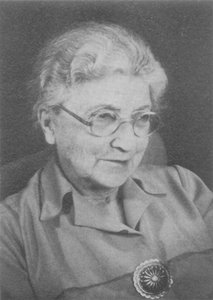Muriel Robertson facts for kids
Quick facts for kids
Muriel Robertson
FRS, FRSTM
|
|
|---|---|
 |
|
| Born | 8 April 1883 Glasgow, Scotland
|
| Died | 14 June 1973 (aged 90) Derry, Northern Ireland
|
| Alma mater | University of Glasgow |
| Known for | protozoology and bacteriology lifecycle of Trypanosoma gambiense in blood and in its insect carrier, the tsetse fly |
| Scientific career | |
| Institutions | Lister Institute |
| Thesis | A study of the life histories of certain trypanosomes |
Muriel Robertson (born April 8, 1883 – died June 14, 1973) was a brilliant Scottish scientist. She was a protozoologist and bacteriologist who worked at the Lister Institute in London. She made very important discoveries about the life cycle of tiny creatures called trypanosomes.
Muriel Robertson was also one of the people who helped start the Society for Microbiology. This group helps scientists who study tiny living things like bacteria and viruses. Other famous scientists, like Alexander Fleming, were also part of starting this society.
Contents
Early Life and Education
Muriel Robertson was born in Glasgow, Scotland. She was the seventh of 12 children. Her father was an engineer. Muriel was taught at home until she went to the University of Glasgow.
When she was 16, her father died suddenly. Muriel first wanted to study medicine. But her mother wanted her to get an Arts degree first. This degree allowed her to take some science classes. This is where she first learned about science in a formal way.
She studied with a professor named John Graham Kerr. He gave her the chance to study the life cycles of protozoa. Protozoa are very tiny, single-celled organisms. This work became a major interest for her whole life. After graduating, she worked in Glasgow for two years. One of her early projects was studying a protozoan called Pseudospora volvocis. This tiny creature was a parasite of an alga called Volvox.
Scientific Career and Discoveries
In 1907, Muriel Robertson received a special scholarship called a Carnegie Fellowship. This allowed her to travel to Ceylon (now Sri Lanka). There, she studied infections caused by trypanosomes in reptiles. She worked at a museum in Colombo.
From 1910 to 1911, she joined the Lister Institute in London. This was a very important research center.
Studying Sleeping Sickness
Around this time, a serious disease called sleeping sickness was a big problem in Uganda. It was causing many people to get very sick. Scientists believed it was responsible for many deaths. The Royal Society sent several groups of scientists to study the disease.
Muriel Robertson was chosen to be a protozoologist for the Uganda Protectorate. She worked there from 1911 to 1914. Her laboratory was at Mpumu, near Lake Victoria Nyanza. This area was where the disease was most common.
She researched the life cycle of Trypanosoma gambiense. This is the specific trypanosome that causes sleeping sickness. She studied how it lived in the blood of people and in its insect carrier, the tsetse fly. Her work was groundbreaking. She showed how the trypanosome moved to the salivary glands of the fly. This was a key step in understanding how the disease spread.
In 1923, she earned her Doctor of Science degree from the University of Glasgow. Her thesis was about the life histories of certain trypanosomes. Her research was so accurate that it was still praised many years later. An article in the journal Nature said her work on this topic had "never been superseded nor indeed equalled."
Later Work and Recognition
In 1936, a new group called the Tropical Medical Research Committee was formed. Muriel Robertson was one of the first scientists chosen to be on this committee.
She returned to the Lister Institute in 1914. She worked there until 1961, except for a short time during World War II. During the wars, she also worked on bacteriology. Her research helped scientists understand and classify bacteria called Clostridia. These bacteria are mainly responsible for a serious infection called gas-gangrene.
In 1947, she was elected a Fellow of the Royal Society. This is a very high honor for a scientist. She was elected in the same year as Dorothy Hodgkin, another famous woman scientist. Only two years before, the first women had been elected to the Royal Society.
The next year, she received an honorary Doctor of Law (LLD) degree from the University of Glasgow. She was also a member of many other important scientific groups. These included the Royal Society of Tropical Medicine and the Institute of Biology. She helped found the Society of General Microbiology.
Muriel Robertson officially retired in 1948. But she continued to work. She taught her skills to other researchers at the Lister Institute until 1961. In the 1950s, she had a serious eye condition called glaucoma. She had one eye removed. She eventually retired fully and moved to her family's home in Limavady, Northern Ireland. She passed away on June 14, 1973, after an illness.
See also
- Protistology

